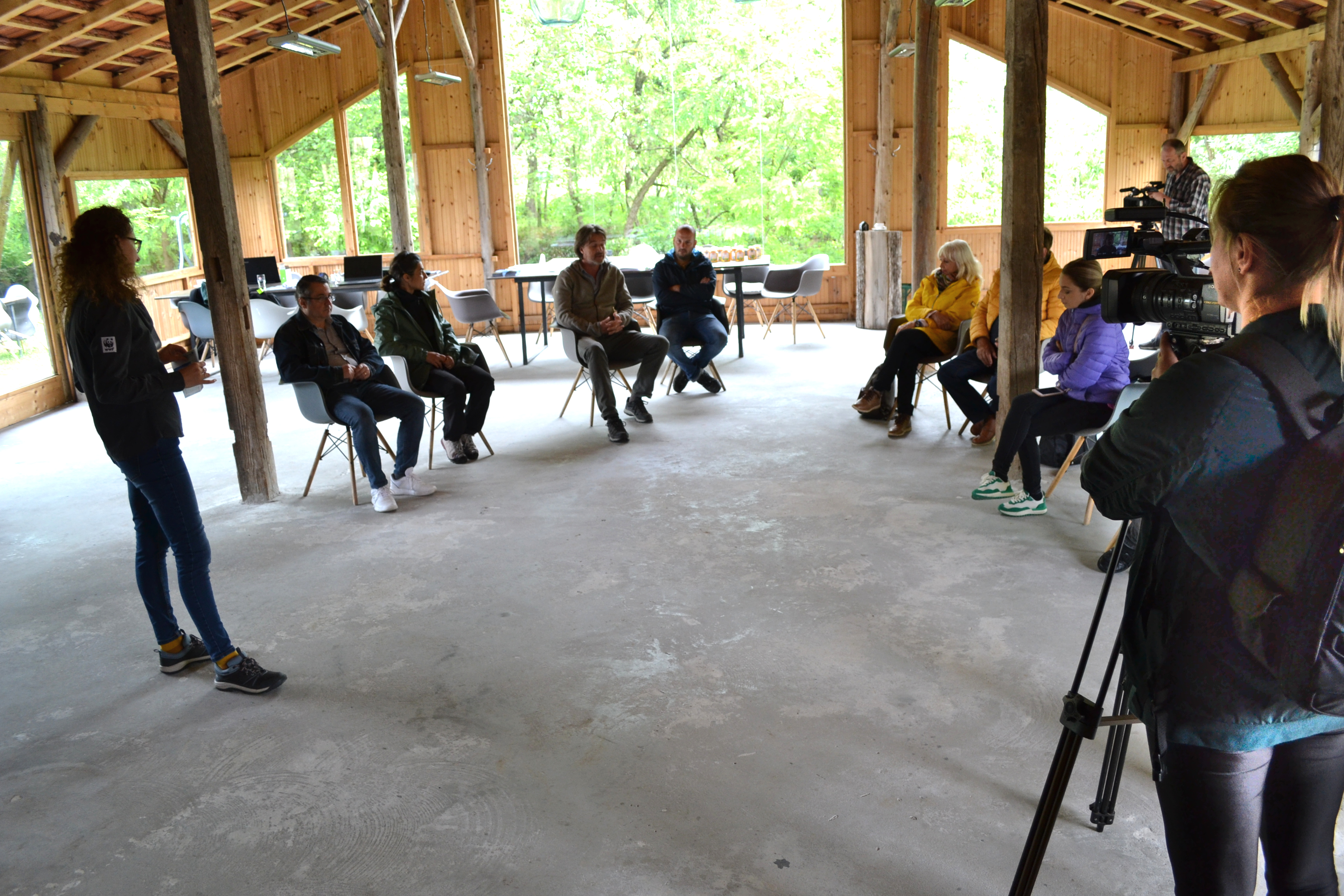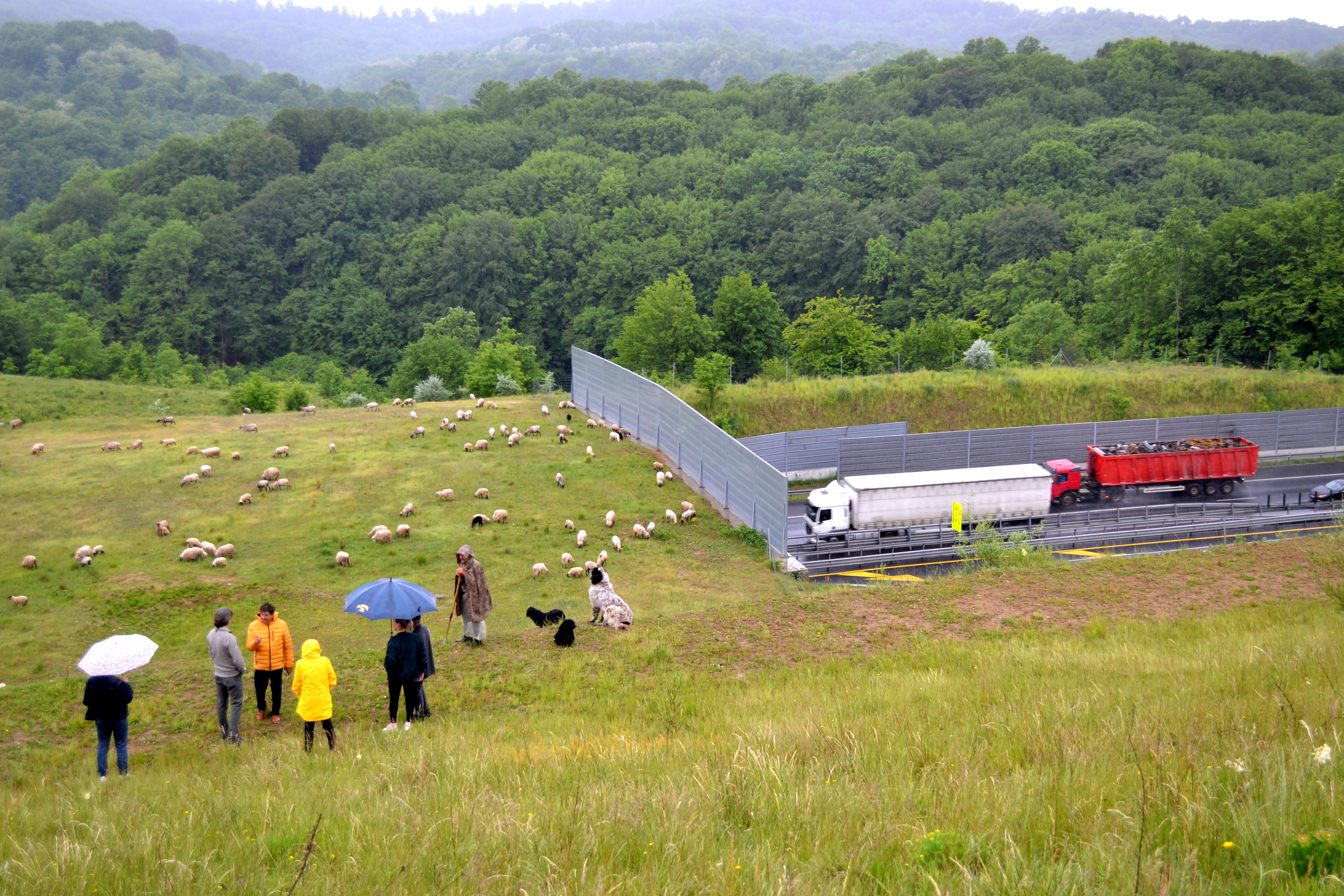SaveGREEN - Press trip at Arad-Deva pilot area, representing a socio-economic growth in harmony with nature
07-06-2022
Infrastructure is one of the essential elements of economic and social development for an efficient and modern society, but it must comply with environmental legislation and ensure the safety of both people and various animal species.
WWF Romania and Zarand Association presented on the 24th of May the activity of the SaveGREEN project in the Arad-Deva region, one of two pilot areas in Romania. This is a good example of urban development that through its new linear infrastructure, intensive agriculture and forestry can affect the functionality of ecological corridors and thus decrease the efficiency of ecosystem services which we all depend on.
In an open discussion with regional and local press that took place at the Șura event centre in the commune of Făget, surrounded by nature and local traditions, we summarised the project's objectives and key actions.
 Foto © Bianca Ștefănuț, Adrian Grancea / WWF România
Foto © Bianca Ștefănuț, Adrian Grancea / WWF România
"The SaveGREEN project aims to facilitate cooperation between all sectors involved in socio-economic development and environmental protection. When we talk about green infrastructure we are not only talking about transportation, but also agriculture, forestry, water and game management, tourism, etc.", says Ioana Ismail, SaveGREEN Project Manager, WWF Romania.
Needs and challenges
Together with Ioana Ismail, Adrian Grancea, Forest and Protected Areas Specialist WWF Romania, Radu Moț, Technical Expert and Răzvan Rohan, Field Agent, both representatives of the Zarand Association, we explored the area and learned about the importance of the mosaic landscape where agricultural land with diverse crops, traditional grazing, riparian forests and solitary trees are conducive to a diverse flora and fauna that helps small farmers thrive.

Foto © Bianca Ștefănuț, Adrian Grancea / WWF România
We understand how the disappearance of these beneficial oases for nature and people due to chaotic development, through constructions such as highways, national roads, railways, fences, buildings and power lines, without taking into account the needs of local people and nature, can cause a chain of critical situations such as floods, droughts, landslides, road accidents, power failures and loss of biodiversity.
"The green bridge at Coșevița in Timiș county is the perfect example of how green infrastructure serves both wildlife and people. There were about 200 sheep moving across the ecoduct, along with the shepherd who told us that these green crossings are also used by locals, because there is no other way to cross the highway," says Ioana.
In this field visit we saw concretely how human activities as well as critical areas for wildlife movement overlap and thus counscious decisions need to be made for harmonious coexistence between man and nature.
Barriers and biodiversity
Starting in autumn 2021, field experts from the Zarand Association are studying the impact of natural and artificial barriers and human activity on mammal species to gain an understanding of the functionality and effectiveness of several Natura 2000 sites in South-Western Romania.
"On the border between Timiș and Hunedoara counties, and beyond, we are witnessing an explosion of economic development, but there is also a biodiversity here that is the envy of many western countries. In our SaveGREEN monitoring work around the ecoducts and other critical areas, we have identified numerous tracks and images of bears, wolves, deer, wild pigs, badgers, foxes, jackals many species of birds, reptiles and amphibians," says Răzvan Rohan while showing us a camera trap video of a wild cat running across a green bridge against the sound of speeding cars and trucks.
"If we ensure their safe passage between protected areas through connecting corridors, or ecological corridors, through green bridges, underpasses and we also take care of their maintenance, then we ensure their migration for food, breeding, territory and we keep the natural balance and humans safety. We have everything to gain," adds Razvan.
 Foto © Bianca Ștefănuț / WWF România
Foto © Bianca Ștefănuț / WWF România
During this period, trans-national workshops are taking place where experience, knowledge and best practices are being exchanged between project partners to define concrete solutions for improving, restoring and maintaining the functionality of key ecological corridors in the valleys of the Carpathian, Alpine and Balkan mountains.
The data collected, the challenges and solutions identified will be presented to the representatives of the ministries that through their work will contribute to and regulate ecological connectivity.
The SaveGREEN project "Protecting the Functionality of Ecological Corridors of Transnational Importance in the Danube River Basin" takes place in 8 pilot areas in Austria, Czech Republic, Slovakia, Hungary, Ukraine, Romania and Bulgaria, is a necessary continuation of the TransGREEN and ConnectGREEN projects carried out in previous years and is co-financed by the European Regional Development Fund (ERDF).
For more details please contact:
Bianca Ștefănuț, Senior Communications Specialist, WWF-România
Mail: bstefanut@wwf.ro
Tel:+40 730 098 722
